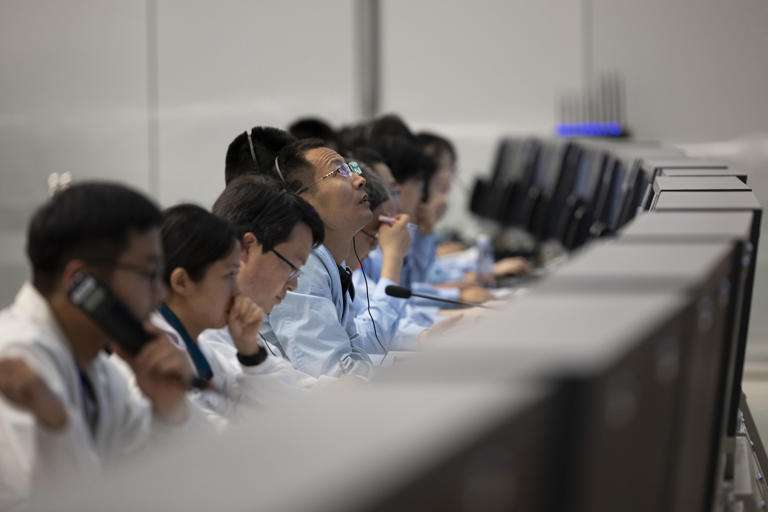China has announced that a spacecraft carrying rock and soil samples from the far side of the moon has successfully taken off from the lunar surface and is now on its way back to Earth. The ascender of the Chang’e-6 probe lifted off on Tuesday morning and entered a preset orbit around the moon, according to the China National Space Administration. The Chang’e-6 probe was launched last month and its lander touched down on the far side of the moon on Sunday. The spacecraft has stored the collected samples in a container inside the ascender, as planned. The container will later be transferred to a reentry capsule, which is scheduled to return to Earth in China’s Inner Mongolia region around June 25. Missions to the far side of the moon pose additional challenges due to the lack of direct communication with Earth, requiring a relay satellite for communication. The terrain on the far side is also more rugged, with fewer flat landing areas.
According to Xinhua, the probe has landed in the South Pole-Aitken Basin, an impact crater that was formed over 4 billion years ago. This crater is incredibly deep, reaching a depth of 13 kilometers (8 miles), and has a diameter of 2,500 kilometers (1,500 miles). It is the oldest and largest crater on the moon, making it a valuable source of information about the moon’s early history. Xinhua also suggests that the impact of this crater may have caused materials from deep within the moon to be ejected.
This mission is part of the Chang’e moon exploration program, named after a Chinese moon goddess. It is the sixth mission in the program, and the second one aimed at bringing back samples. The previous mission, Chang’e 5, successfully collected samples from the near side of the moon in 2020.
China’s moon program is seen as a part of its increasing rivalry with the United States, which is still the leader in space exploration, as well as other countries like Japan and India. In addition to this successful moon landing, China has also established its own space station in orbit and regularly sends crews there.
The aspiring global powerhouse has set a goal to send a person to the moon by 2030, following in the footsteps of the United States as the second nation to achieve this feat. Meanwhile, the United States, after a hiatus of over 50 years, is also planning to land astronauts on the moon again, with NASA recently adjusting the target date to 2026.
